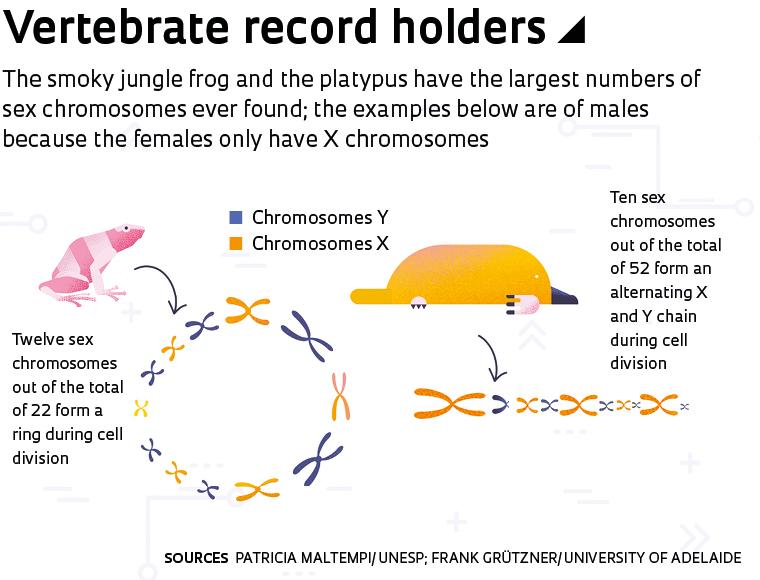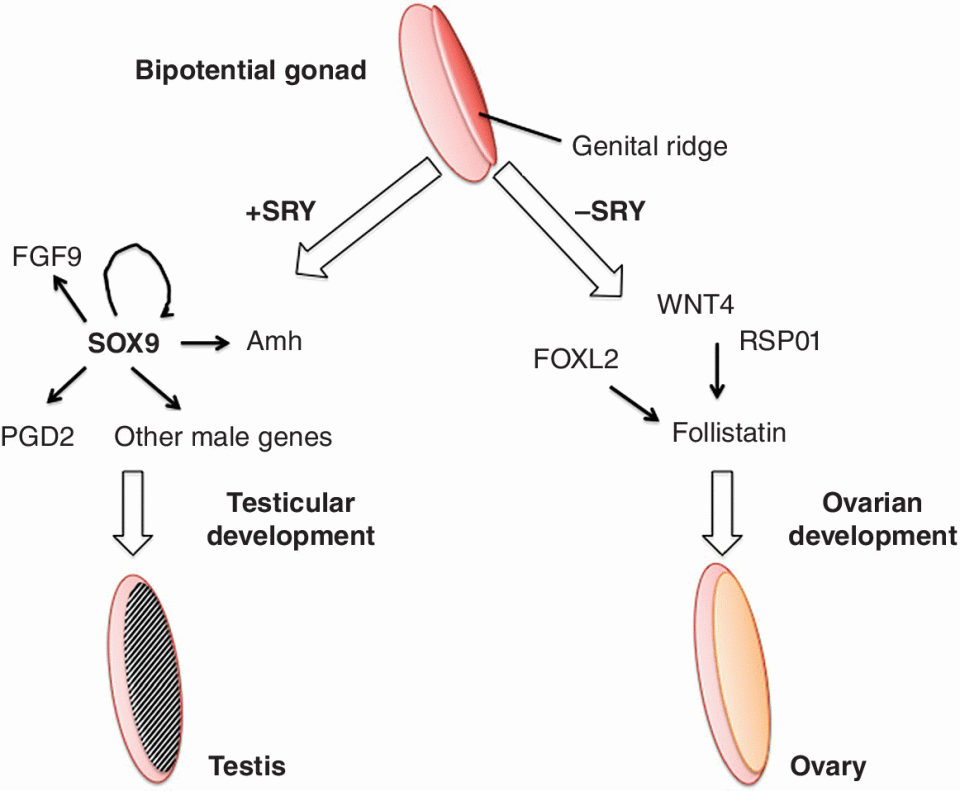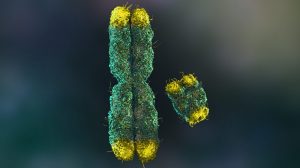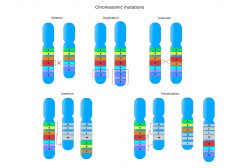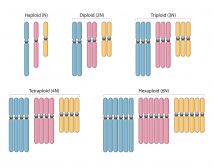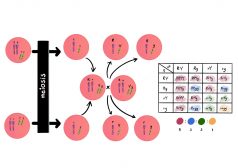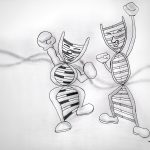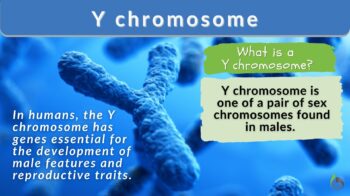
Y chromosome
n., plural: y chromosomes
[wī′krō′mə-sōm′]
Definition: One of the two sex chromosomes in humans, typically found in males
Table of Contents
Y chromosome Definition
The Y chromosome constitutes one member of the pair of sex chromosomes within an organism, a common feature in various species including human beings. Its principal function resides in determining the male biological sex and its concomitant attributes. In Homo sapiens sapiens (human beings), there are 23 pairs of chromosomes; one pair of sex chromosomes and 22 pairs of autosomal chromosomes (type of other human chromosomes). Human males (XY) typically inherit one X chromosome (from a female parent) and one Y chromosome (from a male parent), contrasting with females (XX) who inherit two X chromosomes (one from a male parent and one from a female parent). The other chromosomes are inherited equally from both parents.
The X and Y sex chromosomes originated from an ancestral pair of chromosomes with homologous characteristics. Throughout the process of mammalian evolution, these chromosomes underwent a gradual degradation with the Y chromosome experiencing significant changes. This ongoing divergence eventually formed the distinct X and Y sex chromosomes that we observe today.
The Y chromosome assumes a pivotal role in instigating the differentiation of an individual into the male sexual phenotype during the embryonic stage, thereby initiating the development of male reproductive organs and secondary sexual characteristics. Embedded within the Y chromosome are genes with important gene expression responsible for the synthesis of proteins imperative for the development and operation of the male reproductive system. Throughout animal and human evolution, the Y chromosome has undergone transformations that have yielded divergence in terms of gene composition and structural configuration amongst species.

Video: Y chromosome and X chromosome in humans:
Biology definition:
Amongst the two sex chromosomes in human beings, the Y chromosome has a major role in determining genetically if the progeny is male (presence of chromosome Y; XY genotype) or female (absence of chromosome Y; XX genotype). This chromosome is normally inherited from father to son, thus clarifying the role of the male parent in sex determination. Apart from this role, the Y chromosome tends to play some other lesser-studied roles too as cardiovascular health, immunity, etc.
In humans and other mammals, the Y chromosome bears the Sex determining Region Y (SRY) gene. The SRY gene codes for the SRY protein that is involved in testicular development in many male mammals. It is particularly located in the so-called sex-determining region of the Y chromosome.
Therian and Non-therian Y chromosomes
Some major differentiating points to note about the therian and non-therian Y chromosomes are:
-
Therian Y chromosome (placental mammals and marsupials)
- Presence of SRY Gene: The therian Y chromosome spans a gene known as the “SRY gene” that stands for the sex-determining region Y. This gene is responsible for triggering the development of male characteristics during embryonic development.

Figure 2: SRY is a sex-linked gene as it is present only on the Y chromosome. It stands for the Sex-determining region Y. Image Credit: School of Biomedical Science - Male Determination: In placental mammals and marsupials, the presence of the Y chromosome with the SRY gene leads to the development of males (XY), while the absence of the Y chromosome results in females (XX). Testis-specific proteins are intricately linked to the Y chromosome and are vital for male reproductive development.
- Highly Specialized: The Y chromosome in therian mammals has undergone significant degeneration over evolutionary time that has resulted in a reduced number of genes compared to its counterpart, the X chromosome. This degeneration has led to the loss of many other genes (in the male-specific region, except those necessary for male-specific functions.
- Sexual Dimorphism: Sexual dimorphism manifests in Therians due to the existence of the Y chromosome and its associated Y genes that lead to the development of male reproductive organs and secondary sexual characteristics.
- Presence of SRY Gene: The therian Y chromosome spans a gene known as the “SRY gene” that stands for the sex-determining region Y. This gene is responsible for triggering the development of male characteristics during embryonic development.
-
Non-therian mammalian Y chromosome in egg-laying mammals (platypus and echidnas)
- Conserved Sex Determination: In egg-laying mammals like platypus and echidnas, the Y chromosome plays a role in sex determination, similar to the therian Y chromosome. It contributes to the development of males (XY) and females (XX).

Figure 3: Male platypus has five (5) Y chromosomes and holds the record of maximum sex chromosomes found in the animal world along with the smoky jungle frog. Image Credit: revistapesquisa - Unique Characteristics: The Y chromosome in egg-laying mammals retains some ancestral traits which makes it distinct from the Y chromosomes found in placental mammals and marsupials.
- Limited Gene Degeneration: While some degeneration has occurred on the Y chromosome of egg-laying mammals over evolutionary time, it has not experienced the same degree of reduction seen in therian Y chromosomes.
- Presence of Evolutionary Relics: The Y chromosome of egg-laying mammals may still retain genes that have lost their function over time or have evolved into new roles.
- Evolutionary Insights: Studying the Y chromosome of egg-laying mammals can provide insights into the evolutionary history of sex chromosomes and the mechanisms of sex determination in early mammalian ancestors.
- Conserved Sex Determination: In egg-laying mammals like platypus and echidnas, the Y chromosome plays a role in sex determination, similar to the therian Y chromosome. It contributes to the development of males (XY) and females (XX).
-
Non-mammalian Y chromosome (reptiles, birds, insects, fish, etc.)
-
- Diverse Sex Determination: The role of the Y chromosome in determining sex is highly variable among non-mammalian species. While it may be involved in sex determination in some species (as in birds), other species have different mechanisms, such as temperature-dependent sex determination (as in reptiles) or social structure (as in some fish species).
Read: Molecular Basis of Temperature-Dependent Gender of Red-Eared Slider Turtle - Gene Variation: The gene content and structure of the Y chromosome in non-mammalian species vary widely. Some species may have relatively conserved Y chromosomes while others may exhibit rapid evolution and high variability.
- Evolutionary Flexibility: The Y chromosome in non-mammalian species is not constrained by the same degree of sex-specific functions as seen in therian mammals. As a result, it can be more adaptable to different roles over evolutionary time.
- Secondary Functions: In addition to sex determination, the Y chromosome in non-mammalian species may be involved in other functions like immune response, coloration, or behavior depending on the species.
- Evolutionary Insights: Comparative studies of Y chromosomes across non-mammalian species offer valuable insights into the evolution of sex chromosomes, the dynamics of gene loss (chromosome loss) and retention, and the mechanisms driving sex determination diversity.

Figure 4: Sex determination across different animals varies and doesn’t happen only as per Y chromosomes. Many other mechanisms and factors influence the final sex of the progeny. Image Credit: Revista Pesquis
- Diverse Sex Determination: The role of the Y chromosome in determining sex is highly variable among non-mammalian species. While it may be involved in sex determination in some species (as in birds), other species have different mechanisms, such as temperature-dependent sex determination (as in reptiles) or social structure (as in some fish species).
Y Chromosome Genetics
Understanding the underlying genetics of the Y chromosome in therian mammals, particularly human genetics is pivotal. It unveils the basis of male sex determination shedding light on developmental intricacies and providing clinical significance as Y chromosome anomalies relate to genetic disorders in male patients (like the presence of an extra Y chromosome in some males [47, XYY], or the presence of one extra X chromosome as in Klinefelter syndrome [47, XXY] in some males, or presence of two Y chromosomes or more as in XYYY where individuals face skeletal abnormalities and other issues) and male infertility (associated with y chromosome microdeletion). Additionally, unraveling the Y chromosome’s evolution informs broader evolutionary studies and enhances our grasp of genetic diversity.
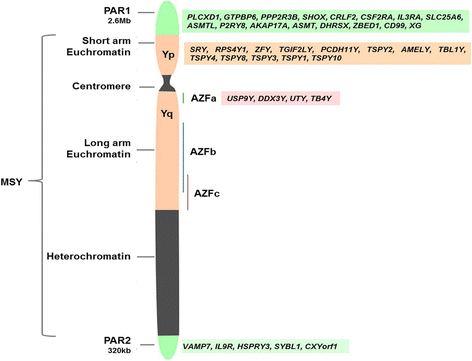
- Sex Determination and SRY Gene: The sex-determining region of the Y chromosome harbors the SRY gene. SRY gene codes for a DNA-binding transcription factor that orchestrates the differentiation of “bipotential gonads” into “testes” during embryogenesis. SRY activates the expression of genes such as SOX9 which plays a central role in male-specific organogenesis.

Figure 6: Importance of the expression of SRY gene in male fate. Image Credit: Basic Medical Key - Y Chromosome Structure and Gene Content: The Y chromosome exhibits substantial structural and gene content differences from its homolog, the X chromosome.Genetic recombination between X and Y chromosomes is restricted to small “pseudoautosomal regions” (PARs) at their ends which prevents extensive recombination. Consequently, the Y chromosome undergoes reduced DNA repair leading to accumulated mutations and gene losses over evolutionary time.

Figure 7: The pseudoautosomal region (PAR) is a distinct segment of sequence homology between the two sex chromosomes; X and Y. It is the site of recombination in the Y chromosome during meiosis, thus providing valuable insights into the genetic, evolutionary, and biomedical aspects of the eutherian genomes. PARs are unique in the sense that they possess higher recombination rates than the genome average and have a bias toward GC type of substitutions. They also have higher nucleotide divergence and mutations between different individuals. Image Credit: Raudsepp, T. - Evolutionary Dynamics: The process of degeneration has caused the Y chromosome to lose ancestral genes that were once shared with the X chromosome. This phenomenon is particularly evident in the mammalian lineage which has led to the emergence of “male-specific genes”.
- Male-Specific Genes and Functions: The Y chromosome carries genes that govern various male-specific functions. These include genes implicated in spermatogenesis, sex determination maintenance, and male fertility. The DAZ (Deleted in Azoospermia) gene family which is located in the AZF region is integral for “germ cell development” and “production of mature spermatozoa”.

Figure 8: Y chromosome comprises discrete sequence classes. The table shows functional and genomic characterization of the DAZ genes in the AZF region. Image Credit: Paulo Navarro-Costa - Y Chromosome Evolution in Humans: Human Y chromosome research has revealed its complex evolutionary history. The presence of palindromic sequences, large inverted repeats, and ampliconic regions has contributed to its “structural instability”. Mechanisms such as “gene conversion and duplications” have shaped the architecture of the human Y chromosome.
- Y Chromosome Haplogroups and Phylogenetics: Y chromosome haplogroups are defined by specific sets of polymorphisms and serve as markers for “tracing paternal lineages” and “migration patterns”.
-
Inheritance of the Y chromosome
The inheritance of the Y chromosome follows a “pattern distinctive to males” in species exhibiting chromosomal sex determination. In mammals, including humans, the Y chromosome is transmitted from father to son without recombination due to its restricted homology with the X chromosome. During male meiosis, the Y chromosome segregates intact, which ensures the preservation of paternal genetic heritage. This unidirectional inheritance results in the “transmission of Y chromosome haplogroups” which helps in understanding the deep paternal ancestry.
The Y chromosome’s non-recombinant nature maintains lineage-specific mutations which help in phylogenetic and population studies. Such inheritance patterns underscore the role of the Y chromosome in tracing paternal lineage and understanding evolutionary processes.

-
Structure of the Y chromosome
The Y chromosome is an integral component of the chromosomal complement in many species and possesses a unique and intricate structural composition. In most mammals, including humans, the Y chromosome exhibits a “mosaic-like organization” featuring regions of distinct genetic content interspersed with segments of repetitive DNA. Some important structural components of the Y chromosome are:
-
- Sex-determining genes like SRY (chromosomal localization within the sex-determining region)
- Palindromic sequences
- Inverted repeats
- Ampliconic regions

Y Chromosomal Adam
Y-chromosomal Adam is a concept rooted in population genetics. It explains the idea of the “theoretical male ancestor” from whom all present-day Y chromosomes in human males trace their lineage. This conceptual framework acknowledges the non-recombining nature of the Y chromosome which imparts a pattern of unbroken paternal transmission across generations. Y-chromosomal Adam does not imply sole existence or uniqueness; rather, he represents a “common paternal ancestor” from a remote era.
-
Function of the Y chromosome
The Y chromosome plays several important functions.
-
- Crucial role in male development and reproduction
- Houses genes responsible for male sex determination during embryogenesis
- Important for the production of male-specific hormones like testosterone
- Integral for the development of secondary sexual characteristics in males
- Harbors genes governing spermatogenesis (pivotal for male fertility)
-
Determining the Male Phenotype
The determination of the male phenotype is primarily governed by genetic and hormonal factors. In many species, including mammals like humans, the presence of the Y chromosome plays a central role in initiating the developmental pathway leading to the male phenotype.
-
- Genetic Factors
- Presence of Y Chromosome
- SRY Gene Activation
- Hormonal Factors
- Secretion of Male Sex Hormones
- Testosterone’s Effects on Development
- Genetic Factors
-
Other Roles
While the Y chromosome is primarily associated with male sex determination and reproduction, recent genetic research has revealed lesser-studied roles that extend beyond conventional functions. In humans and other therian mammals, these include:
- Immune System Regulation: The Y chromosome houses genes that contribute to immune system regulation and response. Some genes in the major histocompatibility complex (MHC), which plays a vital role in immune recognition are found on the Y chromosome. These genes might influence immune-related diseases and responses.
- Brain Development and Function: Emerging evidence suggests that some Y chromosome genes are expressed in brain tissues and are involved in neurodevelopment and cognition. Genetic variants of these genes could potentially contribute to sex-related differences in brain structure and function.
- Cardiovascular Health: Genes on the Y chromosome might influence cardiovascular health. Some Y chromosome genes are implicated in the regulation of blood pressure and endothelial function which could have implications for cardiovascular diseases.
- Cancer Susceptibility: Studies suggest that certain Y chromosome genes might play a role in protecting against certain types of cancers including those of the lung and prostate. These genes could potentially influence cancer susceptibility and progression.
- Metabolism and Obesity: Y chromosome genes might be involved in metabolic processes and obesity regulation. Variations in Y chromosome genes could contribute to sex-specific differences in metabolism and obesity risk.
- Bone Health: Genes on the Y chromosome might impact bone health and mineral density. Variations in these genes could potentially influence susceptibility to bone-related disorders.
- Aging and Longevity: Y chromosome variation has been associated with aging and longevity. Some Y chromosome genes are implicated in cellular processes related to aging and might contribute to differences in lifespan between males and females.
- Regulation of X-Chromosome Inactivation: In species with XY sex determination, the Y chromosome might play a role in regulating X chromosome inactivation in females. This process ensures gene dosage balance between males and females.
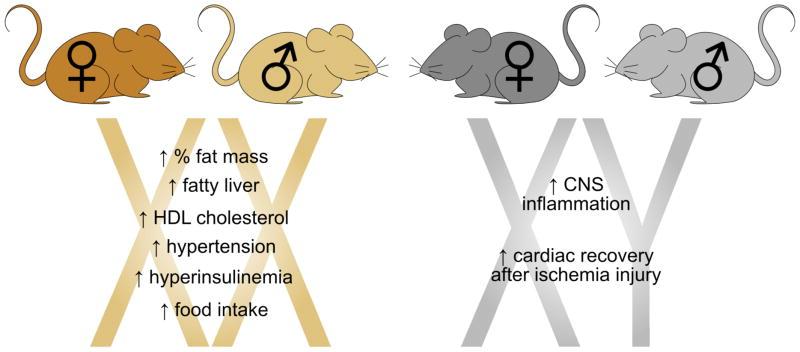
Clinical Relevance
The Y chromosome holds significant clinical relevance due to its involvement in various genetic disorders and medical conditions. Extending from genetic disorders, infertility, prenatal screening, forensics, and population studies to personalized medicine, insights gained from Y chromosome research contribute to both medical diagnosis and our broader understanding of human biology and evolution.
-
Sex Chromosome Disorders
The Y chromosome carries genes that, when mutated or disrupted, can lead to specific genetic disorders. For example,
-
- Mutations in genes within the Y chromosome’s AZF (Azoospermia Factor) regions can result in male infertility due to impaired sperm production.
- Mutations affecting the SRY gene can lead to disorders of sex development (DSD) where individuals might have atypical reproductive anatomy.
Genetic testing of the Y chromosome can be employed during “prenatal screening” to determine fetal sex. In cases of suspected genetic disorders or DSD, prenatal genetic testing of the Y chromosome can aid in diagnosis and management decisions.
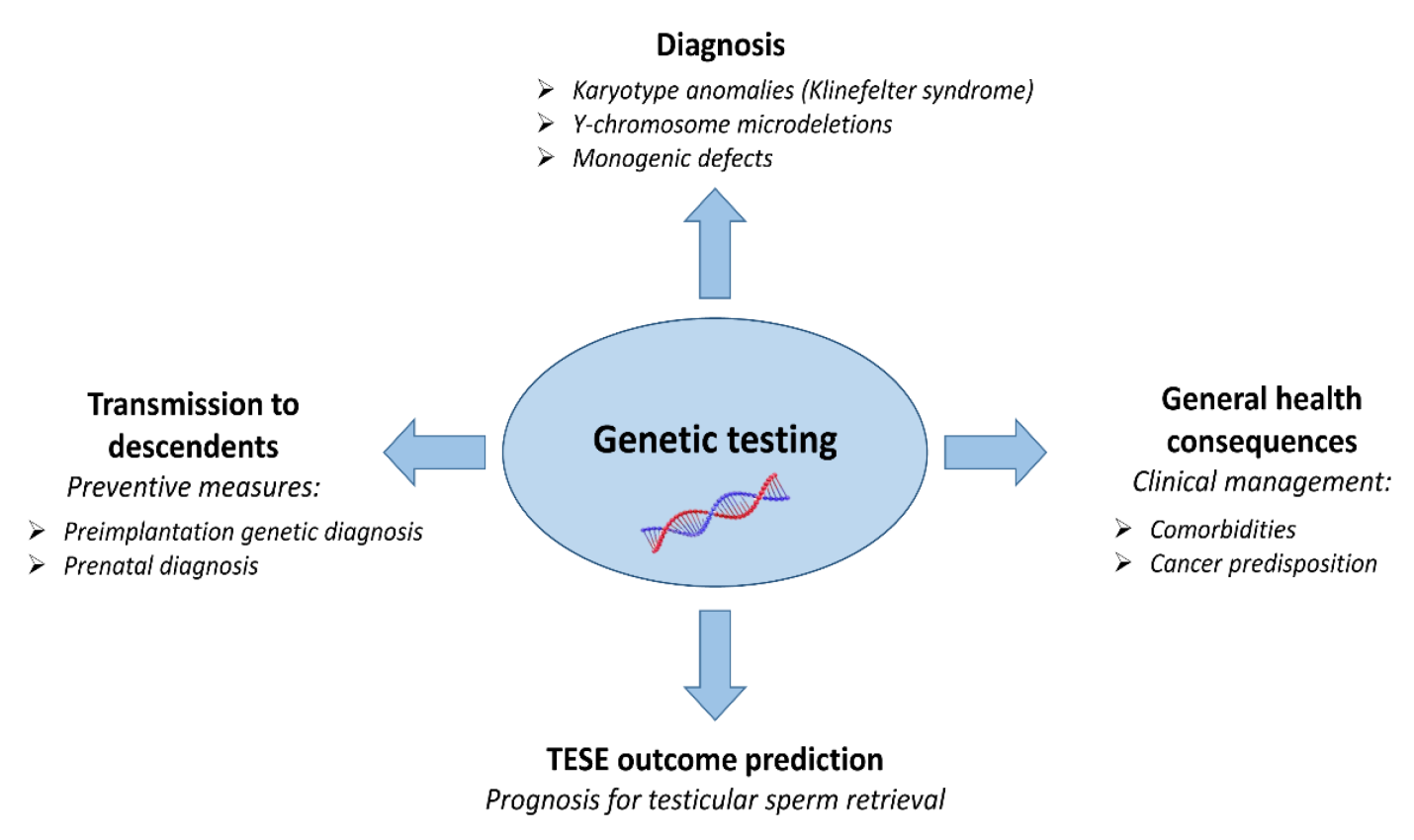
-
Androgen Insensitivity Syndrome
Androgen Insensitivity Syndrome (AIS) is a condition (specifically a genetic condition) where the human body is at the loss of the ability to respond and act on exposure to male sex hormones (androgens). There could be partial or complete insensitivity to androgens; which is studied as CAIS (complete AIS) and PAIS (partial AIS). AIS affects individuals who are “genetically male” (meaning they possess a set of XY chromosomes) but might “possess external genital organs of the opposite sex” (typically of female to ambiguous).

-
Loss of Y chromosome (LOY)
The loss of the Y chromosome can occur due to genetic mutations or chromosomal abnormalities. This condition primarily affects males as the Y chromosome is the defining characteristic of the male chromosomal complement (XY). The loss of the Y chromosome can have various implications for health and development:
- Haploinsufficiency: Haploinsufficiency is experienced by those who lack the genetic material (Y chromosome) necessary for proper development.
- Infertility: In males, loss of the Y chromosome results in infertility leading to disrupted spermatogenesis. As the Y chromosome carries genes vital to the development of sperm cells, their loss is detrimental to sperm production.
- Disruptions in Expression of Secondary Sex Characteristics: Loss of Y chromosome genes that are vital for the development of male secondary sexual features can affect physical traits like muscle development, body hair growth, voice changes, etc.
- Developmental and Health Effects: Since many research findings suggest potential links between the Y chromosome and its other functions apart from male sexual development, its loss can lead to certain developmental disorders and health conditions like cancer and cardiovascular disorders.
Forensic Significance
The Y chromosome’s non-recombining nature allows for the development of Y chromosome-based “forensic DNA analysis methods”. This is particularly useful in identifying male individuals or paternal lineages in crime investigations and historical studies.
In forensic DNA analysis, identifying the sex of an individual is a fundamental step. The presence of a Y chromosome unequivocally designates the individual as male. This initial sex determination is crucial in narrowing down the pool of potential suspects or individuals of interest in criminal investigations. Y chromosome-based forensic analysis allows investigators to establish relationships between male individuals which provides insights into familial connections that can be pivotal in crime resolution.
Historical studies also benefit from Y chromosome analysis. Researchers can reconstruct paternal lineages over generations which will be important to understand the migration patterns, genetic diversity, and historical population movements. By examining the Y chromosome markers of present-day individuals and comparing them to ancient remains, historical relationships, and genetic lineages can be traced back in time.
NOTE IT!
Information Alert: Y Chromosome is Finally Sequenced in 2023!!!!
Though the Human Genome Project was launched in 1990 and finished in 2003 providing a robust blueprint of what lies in the human genome, there was still one chromosome that was particularly tricky to crack. Can you guess which one was it?
Yes, the Y chromosome!!!
In a groundbreaking achievement that has the potential to reshape our understanding of human biology, scientists have successfully decoded the Y chromosome for the first time. This milestone holds the promise of uncovering vital insights into human genetic material and could lead to transformative advancements in the study of male infertility and various health disorders.
Despite efforts to decipher our genetic code that began nearly two decades ago, significant gaps persisted within the 23 pairs of human chromosomes. An international consortium consisting of over 100 researchers known as the Telomere-to-Telomere (T2T) Consortium has finally reported successful sequencing of this tricky “Y chromosome”.
So, why did this task take so long to be accomplished? What hindered the sequencing of the Y chromosome? What difficulties persisted for nearly 20 years and have finally been overcome? Let’s quickly answer these questions!
- The prolonged timeline for this achievement stems from “inherent challenges posed by the Y chromosome”. Its unique nature with high repeat content and structural intricacies made sequencing it exceptionally demanding. Overcoming these challenges required the development of advanced sequencing technologies and computational methods.
- The Y chromosome is known to contain stretches of repeated DNA which makes it challenging to piece together an accurate sequence. Additionally, the presence of palindromic sequences which read the same forwards and backward further complicated the sequencing process over the years.
- The breakthrough achieved by the T2T Consortium was made possible by innovative “long-read sequencing technology” and “sophisticated computational algorithms”. These advancements enabled the researchers to navigate through the repetitive regions and palindromic sequences, ultimately assembling a comprehensive and accurate sequence of the Y chromosome.
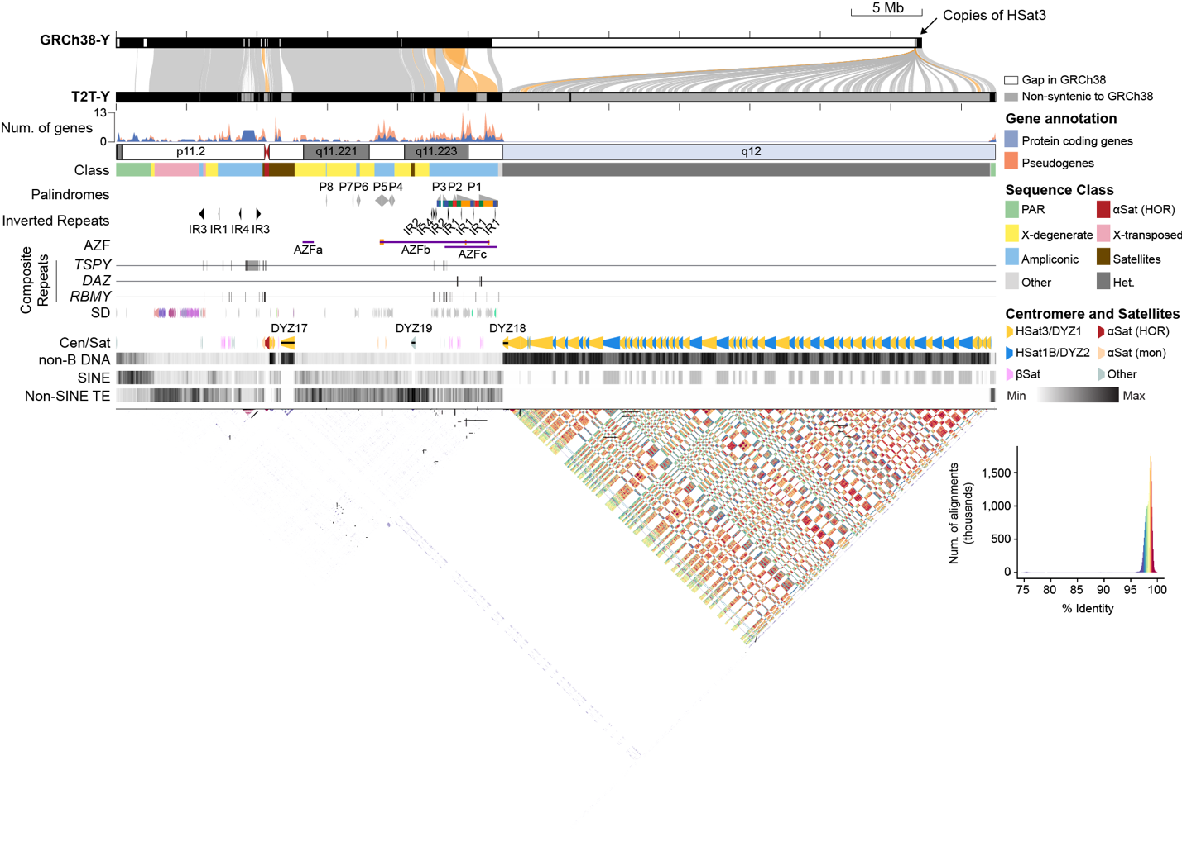
Take the Y Chromosome – Biology Quiz!
Further Reading
References
- Bachtrog D. (2013). Y-chromosome evolution: emerging insights into processes of Y-chromosome degeneration. Nature reviews. Genetics, 14(2), 113–124. https://doi.org/10.1038/nrg3366
- Engelstädter J. (2008). Muller’s ratchet and the degeneration of Y chromosomes: a simulation study. Genetics, 180(2), 957–967. https://doi.org/10.1534/genetics.108.092379
- Quintana-Murci, L., & Fellous, M. (2001). The Human Y Chromosome: The Biological Role of a “Functional Wasteland”. Journal of biomedicine & biotechnology, 1(1), 18–24. https://doi.org/10.1155/S1110724301000080
- Colaco, S., Modi, D. Genetics of the human Y chromosome and its association with male infertility. Reprod Biol Endocrinol 16, 14 (2018). https://doi.org/10.1186/s12958-018-0330-5
- Grützner, F., Rens, W., Tsend-Ayush, E., El-Mogharbel, N., O’Brien, P. C., Jones, R. C., Ferguson-Smith, M. A., & Marshall Graves, J. A. (2004). In the platypus, a meiotic chain of ten sex chromosomes shares genes with the bird Z and mammal X chromosomes. Nature, 432(7019), 913–917. https://doi.org/10.1038/nature03021
- Helena Mangs, A., & Morris, B. J. (2007). The Human Pseudoautosomal Region (PAR): Origin, Function and Future. Current genomics, 8(2), 129–136. https://doi.org/10.2174/138920207780368141
- Raudsepp, T., & Chowdhary, B. (2016). The Eutherian Pseudoautosomal Region. Cytogenetic and Genome Research, 147, 81 – 94.
- Navarro-Costa, P., Plancha, C. E., & Gonçalves, J. (2010). Genetic dissection of the AZF regions of the human Y chromosome: thriller or filler for male (in)fertility? Journal of biomedicine & biotechnology, 2010, 936569. https://doi.org/10.1155/2010/936569
- Krausz, C., & Cioppi, F. (2021). Genetic Factors of Non-Obstructive Azoospermia: Consequences on Patients’ and Offspring Health. Journal of Clinical Medicine, 10(17), 4009. MDPI AG. Retrieved from http://dx.doi.org/10.3390/jcm10174009
- Thangaraj, K., Rajender, S. (2009). Androgen Insensitivity Syndrome. In: Lang, F. (eds) Encyclopedia of Molecular Mechanisms of Disease. Springer, Berlin, Heidelberg. https://doi.org/10.1007/978-3-540-29676-8_103
- Case, L. K., Wall, E. H., Dragon, J. A., Saligrama, N., Krementsov, D. N., Moussawi, M., Zachary, J. F., Huber, S. A., Blankenhorn, E. P., & Teuscher, C. (2013). The Y chromosome is a regulatory element shaping immune cell transcriptomes and susceptibility to autoimmune disease. Genome Research, 23(9), 1474–1485. https://doi.org/10.1101/gr.156703.113
- Kopsida, E., Stergiakouli, E., Lynn, P. M., Wilkinson, L. S., & Davies, W. (2009). The Role of the Y Chromosome in Brain Function. Open neuroendocrinology journal (Online), 2, 20–30. https://doi.org/10.2174/1876528900902010020
- Ross, J. L., Bloy, L., Roberts, T. P. L., Miller, J., Xing, C., Silverman, L. A., & Zinn, A. R. (2019). Y chromosome gene copy number and lack of autism phenotype in a male with an isodicentric Y chromosome and absent NLGN4Y expression. American journal of medical genetics. Part B, Neuropsychiatric genetics: the official publication of the International Society of Psychiatric Genetics, 180(7), 471–482. https://doi.org/10.1002/ajmg.b.32745
- Khan, S. I., Andrews, K. L., Jennings, G. L., Sampson, A. K., & Chin-Dusting, J. P. F. (2019). Y Chromosome, Hypertension, and Cardiovascular Disease: Is Inflammation the Answer? International journal of molecular sciences, 20(12), 2892. https://doi.org/10.3390/ijms20122892
- Patel, R., Khalifa, A. O., Isali, I., & Shukla, S. (2018). Prostate cancer susceptibility and growth linked to Y chromosome genes. Frontiers in bioscience (Elite edition), 10(3), 423–436. https://doi.org/10.2741/e830
- Link, J. C., & Reue, K. (2017). Genetic Basis for Sex Differences in Obesity and Lipid Metabolism. Annual review of nutrition, 37, 225–245. https://doi.org/10.1146/annurev-nutr-071816-064827
- Liu, P. Y., Kalak, R., Lue, Y., Jia, Y., Erkkila, K., Zhou, H., Seibel, M. J., Wang, C., Swerdloff, R. S., & Dunstan, C. R. (2010). Genetic and hormonal control of bone volume, architecture, and remodeling in XXY mice. Journal of bone and mineral research: the official journal of the American Society for Bone and Mineral Research, 25(10), 2148–2154. https://doi.org/10.1002/jbmr.104
- Brown, E. J., Nguyen, A. H., & Bachtrog, D. (2020). The Y chromosome may contribute to sex-specific aging in Drosophila. Nature ecology & evolution, 4(6), 853–862. https://doi.org/10.1038/s41559-020-1179-5
- Marais, G. A. B., Gaillard, J. M., Vieira, C., Plotton, I., Sanlaville, D., Gueyffier, F., & Lemaitre, J. F. (2018). Sex gap in aging and longevity: Can sex chromosomes play a role? Biology of sex differences, 9(1), 33. https://doi.org/10.1186/s13293-018-0181-y
- Rhie, A., Nurk, S., Cechova, M. et al. The complete sequence of a human Y chromosome. Nature (2023). https://doi.org/10.1038/s41586-023-06457-y
©BiologyOnline.com. Content provided and moderated by Biology Online Editors.

